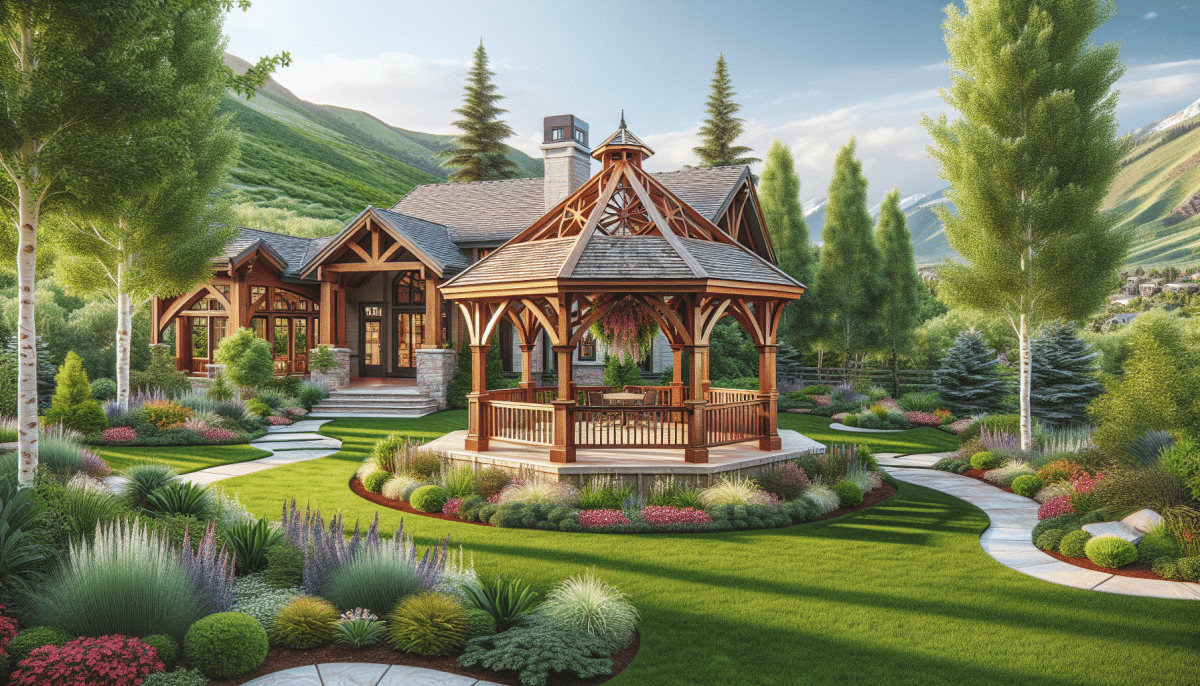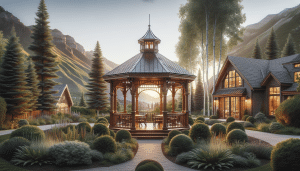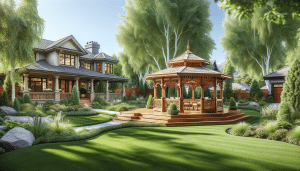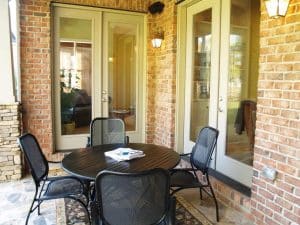Planning to build a Gazebo can be tough if you don’t know which Wood to choose. Utah Pergola Company is here to make your journey easier. In this article, we will walk you through the top wood choices for your next gazebo project, ensuring you pick the best option. Homeowners in our service areas will find this comprehensive guide both educational and fun!
Contents
- 1 Why Wood Matters for Your Gazebo
- 2 Beautiful Cedar: A Timeless Option
- 3 Pine: Affordable and Versatile
- 4 Redwood for a Luxurious Look
- 5 Hardwood Choices: Oak and Mahogany
- 6 Pressure-Treated Wood: Enhanced Durability
- 7 Bamboo: The Eco-Friendly Choice
- 8 The Importance of Maintenance
- 9 DIY or Professional Installation?
- 10 What to Ask Your Contractor
- 11 Making the Final Decision
- 12 Let’s Build Your Dream Gazebo
Why Wood Matters for Your Gazebo
Choosing the right wood is crucial for your gazebo project. The type of wood you select will affect the structure’s longevity, aesthetics, and maintenance. Different woods offer various benefits, making it essential to understand your options before making a decision.
High-quality wood can withstand the elements better, ensuring your gazebo remains beautiful and functional for years. On the other hand, choosing the wrong wood could mean more frequent repairs and higher costs in the long run.
Beautiful Cedar: A Timeless Option
Cedar is a popular choice for gazebos due to its natural resistance to insects and decay. This wood has a unique aroma that acts as a natural insect repellent—a characteristic that many homeowners appreciate.
Furthermore, cedar is highly durable and weather-resistant, making it ideal for outdoor structures. Its beautiful reddish hue adds an elegant touch to your backyard, ensuring your gazebo stands out.
Pine: Affordable and Versatile
For those on a budget, pine is an excellent option. Pine wood is relatively soft and easy to work with, allowing for various design possibilities.
Although it is not naturally resistant to insects and decay, it can be treated to improve its durability. Pine wood also takes paint and stain well, giving you the flexibility to match your gazebos to your existing décor.
Redwood for a Luxurious Look
Redwood is considered a premium wood for outdoor structures. Its rich color and smooth texture add a touch of luxury to any backyard.
This wood is naturally resistant to insects and decay, much like cedar. Additionally, redwood is somewhat more stable than other woods, meaning it shows less warping and splitting over time.
Hardwood Choices: Oak and Mahogany
For those willing to invest more in their gazebo, hardwoods like oak and mahogany offer unparalleled durability and strength. These woods are less likely to dent or scratch, making them perfect for high-traffic areas.
However, hardwoods can be more challenging to work with, often requiring specialized tools and techniques. They are also heavier, which may impact the construction process and overall cost.
Pressure-Treated Wood: Enhanced Durability
Pressure-treated wood is an excellent option for those looking to balance cost and durability. This type of wood undergoes a chemical treatment process to improve its resistance to insects and decay.
While it might not have the natural beauty of cedar or redwood, pressure-treated wood can be stained or painted to achieve your desired look. It’s a practical choice for homeowners seeking long-lasting, low-maintenance solutions.
Bamboo: The Eco-Friendly Choice
If sustainability is a priority for you, bamboo is a fantastic option. Bamboo is not wood but a type of grass that grows quickly, making it an eco-friendly choice for construction projects.
Bamboo is exceptionally strong and flexible, ideal for intricate designs. However, keep in mind that bamboo may require additional treatments to ensure long-term durability when exposed to the elements.
The Importance of Maintenance
No matter which wood you choose, proper maintenance is crucial. Each type of wood has its own set of care requirements that will help extend its life and keep it looking great.
- Regular Cleaning Keeping your gazebo clean helps prevent the buildup of mold, mildew, and dirt. Simple soap and water can go a long way.
- Staining and Sealing Apply a stain and sealant annually to protect the wood from moisture and UV damage. This will also keep the color vibrant.
- Checking for Damage Regularly inspect your gazebo for any signs of wear and tear. Early detection can prevent bigger problems down the line.
- Pest Control Ensure that your wood remains pest-free by employing appropriate treatments or natural solutions.
- Winter Preparation Prepare your gazebo for winter by covering it or applying additional protective coatings to withstand cold and moisture.
DIY or Professional Installation?
Another important factor to consider is whether to go the DIY route or hire professionals for your gazebo project. While building a gazebo yourself can be rewarding, it also involves a lot of planning, skill, and tools.
On the other hand, hiring professionals will ensure that your project is completed to a high standard, saving you time and potential headaches. We at Utah Pergola Company have extensive experience in constructing stunning and durable gazebos, allowing you to sit back and enjoy the process.
What to Ask Your Contractor
If you decide to hire a professional, asking the right questions can ensure you get the best results. Some queries to consider include:
- Experience How many gazebo projects have you completed?
- Materials Do you offer specific wood types, and what do you recommend?
- Timeline How long will the construction process take?
- Warranty What kind of warranty is included with the installation?
- Cost Can you provide a detailed estimate?
Making the Final Decision
With so many wood options available, making the final decision can be daunting. Think about your budget, aesthetic preferences, and maintenance willingness when choosing the wood for your gazebo.
If in doubt, consult us at Utah Pergola Company. We can offer personalized advice to help you find the wood that best suits your needs. Remember, a well-chosen wood will not only enhance your outdoor space but also minimize future upkeep and costs.
Let’s Build Your Dream Gazebo
Ready to transform your backyard with a beautiful, custom-made gazebo? Contact Us by phone # 801-784-6082 or Request a Free Quote.




